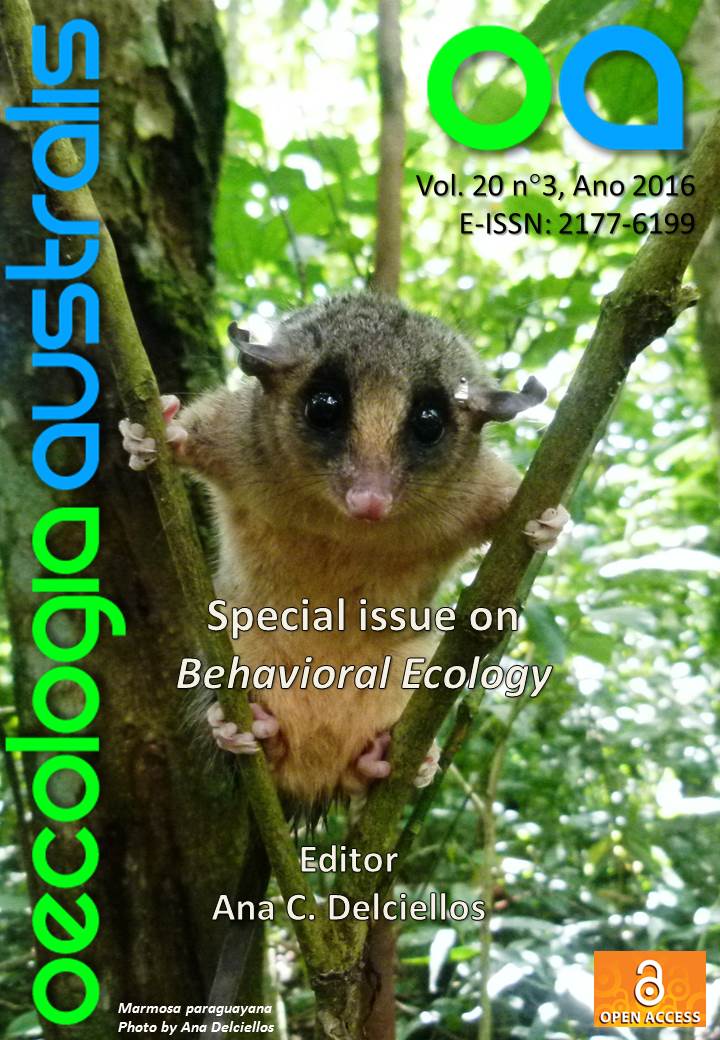STRATEGIES AND TACTICS IN PHORID-ANT INTERACTIONS
DOI:
https://doi.org/10.4257/oeco.2016.2003.01Keywords:
STRATEGIES AND TACTICS IN PHORID-ANT INTERACTIONSAbstract
Phorids are small flies which explore a wide range of resources for survival. Most of the species are saprophages; but there are also mycophagous, herbivores, predators, parasites and parasitoids ones. Phorid parasitoids have aroused great interest in the recent decades when several studies demonstrated their importance on ant control. These flies may parasite fire ants (Solenopsis invicta) and several species of leaf-cutting ants. However, mortality ratios caused by these organisms are comparatively low; but, in turn, they can hinder ant performance, reducing its foraging efficiency. This feature increases the potential of these insects as biological control agents. On the other hand, using these parasitoids in pest management programs requires a thorough knowledge of the host-parasitoid relationships at diverse scenarios. When associated to ants, phorids are subjected to a selection pressure to improve certain abilities as host location, selection and attack. By contrast, such parasitoid action generates a backfire reaction from the host defense mechanism. Thus, both parasitoid and host develop opposing strategies that evolve gradually. The term strategy has frequently been used mistakenly in several areas of knowledge. It has been used to describe acts that do not take part in this complex process of decisions that determine strategy effectiveness. Moreover, a standardized terminology becomes an essential aspect to validate any comparison of phenomena. This paper discusses the concepts of tactics and strategies within the context of phorid parasitoid attack and analyzes information on other behaviors as host localization, choice and acceptance; evaluating the weight of these variables on parasitoidism.


